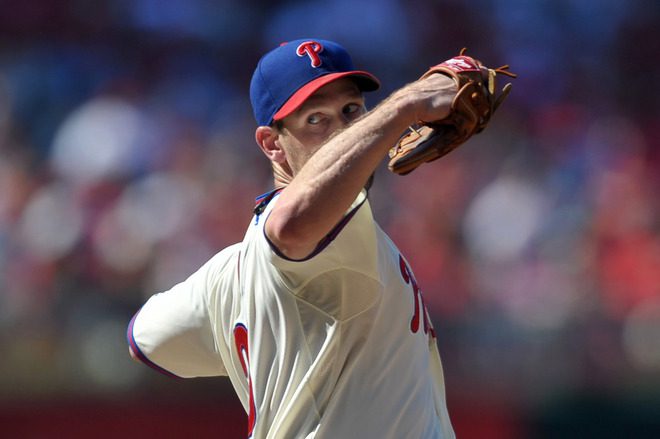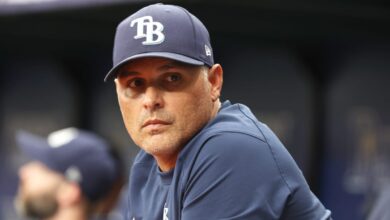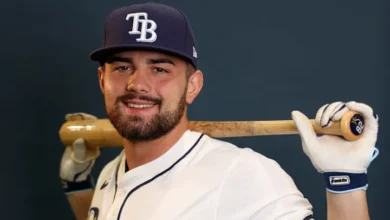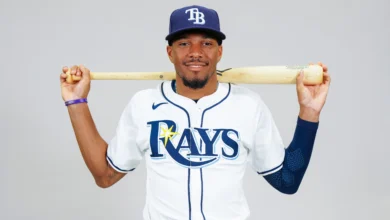
Pampered. Coddled. Eased in. Shut down. These are the sorts of terms and phrases we’ve become comfortable associating with starting pitchers in major league baseball. To the lay ear, these guys sound like a fragile bunch of babies. What happened to the days when aces were described with pickup-truck-advertisement adjectives? “Durable,” for instance. “Rugged.” “Workhorse.” “Professional driver on a closed course.” You know, that sort of thing.

We will, in all likelihood, never again see a major league pitcher toss 300 or more innings in a season — with 35 starts, he’d have to average more than 8.5 innings per start to do so. It is unthinkable that a year like Steve Carlton’s epic 1972, in which he logged 346.1 innings and finished with a whopping 30 complete games (not to mention 27 wins and a 1.97 ERA), could ever be equaled. Of course, even Lefty’s numbers look paltry next to Will “Whoop-La” White’s 1879 numbers, when Cincinnati allowed the then 24-year-old to throw 680 innings and rack up 75 complete games in one season. These sickening old era records are likely to fall right around the time dinosaurs again roam free through Manhattan. Nor do we expect modern starters to vie for any of these borderline-fictitious endurance marks — but still, there is a distinct perception that starting pitchers today are, well, somewhat fragile.
Don’t blame it on the pitchers of course. Blame it on the steroids that were amping up their batting adversaries for years. Blame it on the medical science that elucidated the ills of an oft-repeated overhand throwing motion. Blame it on the strategic innovations in the game, such as closers and five-man rotations. And, most certainly, blame it on the money — the ridiculously rich contracts that force teams to treat every remotely competent player like a brittle Ming dynasty vase.

But there is a glimmer of hope. For several years now, Doc Halladay has been almost single-handedly carrying the torch of endurance. He’s led his league in complete games seven of the last nine years, and is the only firmly consistent pitcher in that regard following the Johnson/Schilling/Clemens/Maddux era. Everyone is keenly aware of Halladay because his consistent endurance as a starting pitcher has been so anomalous among his contemporaries. In 2011, however, new champions are stepping up to help usher in a resurgent era of tough aces. These two men have very different approaches, and are pushing the envelope in different aspects of durable excellence.
For the first workhorse, we need look no farther than one spot down the Philadelphia bullpen bench from the illustrious Doc. Cliff Lee is already a bona fide ace, but this year he is going well beyond a simple reaffirmation of that fact — Lee’s six complete games to date have all been shutouts. The quintessential crafty lefty, Lee shows little emotion and is as soft-spoken about his successes as he is darkly contrite about his infrequent failures. This year, he has gone eight innings or more in almost 43 percent of his starts and is averaging more than a strikeout an inning. His run-less gems haven’t just come against pushovers — in addition to hurling shutouts against the sub-par Washington, Florida and San Francisco offenses, he’s also blanked the Cardinals, Braves and Red Sox. He came within an out of shutting out the Reds, too, but was lifted for closer Ryan Madson. The blankings of Boston and St. Louis came during a truly transcendent streak of three consecutive shutouts in the midst of a 34.1 inning scoreless run in June. Mr. Lee is showing no signs of letting up — he carries an active 30.2 inning scoreless streak into his next start. His shutout total is the highest since Randy Johnson switched leagues in 1998 and squeezed out six. The last player to top six in a season was Tim Belcher and his eight in 1989. Now, there’s a fun ’80s baseball trivia tidbit. In short, Cliff Lee’s impressive 2011 — especially if he manages to toss one more shutout — seems to hearken to a time before the worst of the performance enhancing era, before Mark McGwire really began hitting baseballs like they were golf balls.

The second pitcher that gives us hope for the non-extinction of the durable ace has been an unquestionable surprise this year. Though he’s a perennial 200+ inning guy, Tampa’s James Shields last threw a complete game in 2008. His ERA was 4.14 in 2009, and ballooned to 5.18 in 2010, far from indicative that he was primed for this year’s 2.77 mark. Despite his differences from Lee — Shields is an outspoken righty with an emotionally competitive mound presence (he doesn’t shy away from a brawl … just ask Coco Crisp) — he is similar in that both rely on a well-located and eclectic mixture of pitches rather than power stuff. Perhaps it is this brain over brawn that allows both hurlers to consistently go deep into games. Lee and Shields are more Glavines and Madduxes than Big Units or Rockets. Shields, for instance, has a particularly dominant changeup that he has tightly harnessed in 2011 — an offseason tweak to his mechanics is credited with improving both his accuracy and movement. But his cerebral approach shouldn’t detract from the impressiveness of his feats of endurance this year. To date, he has tossed 11 complete games for the Rays. That is such a big number that the Through The Fence Baseball editorial staff will allow me to represent it with numerals rather than writing it out as a word. [Editor’s note: Thanks for the shout out, Russ!] To put it in perspective, Halladay has never completed more than nine in a season, and Shields had only logged five in his five-year MLB career before 2011 (see, those numbers have to be written out). As baseball’s erstwhile Buddha, Don Zimmer, puts it: “it wouldn’t be rare 35 years ago, but today it’s very, very rare.” Take it from him James, he’s been around the game since, like, the beginning of time. Across his 11 CG, Shields is 9-2 with four shutouts. They say a reputation isn’t made overnight, but after three straight nine-inning outings in June, giving him six on the year at that point, “Complete Game James,” was officially dubbed.
It’s true that, in terms of raw endurance, the efforts of Lee and Shields can’t hold a candle to Carlton’s 30 complete games and eight shutouts in 1972 — or even the feats of many a run-of-the-mill pitcher from that era. But for this day and age, they represent a distinct upward trend and hope for the reputation of starting pitchers everywhere. So, when you’re getting down because Josh Beckett is back on the DL with a blister on his finger, or Carlos Zambrano has carpal tunnel from surfing the ‘net, or some guy misses a start because he slept on his arm funny … just breathe, all is not lost. It is not just James Shields and Cliff Lee who are helping Roy Halladay redeem starting pitchers in spite of the best efforts of general managers to baby them. There are others — workhorse aces like Justin Verlander and Felix Hernandez are seeing steady annual increases in their complete game totals. This is a movement, and its goal is the salvaging of the tough reputation of an entire position. Vive le Endurance!





